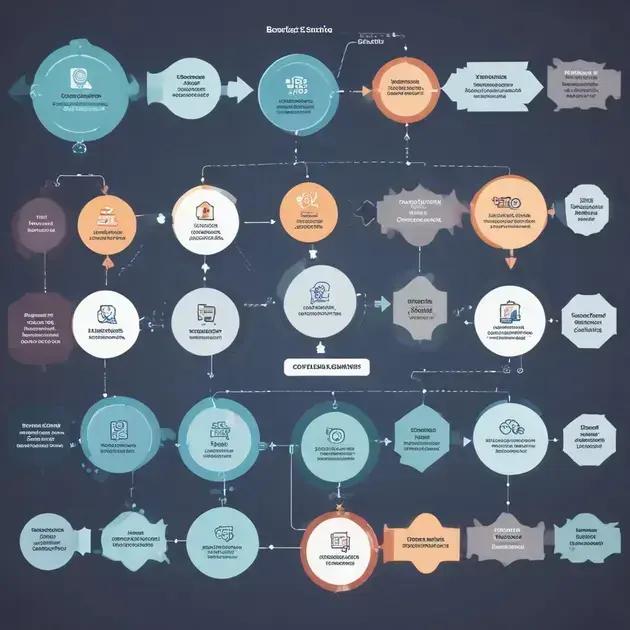Business operations software enhances efficiency by streamlining processes, boosting collaboration, and improving data management. By implementing the right software, businesses can increase productivity, reduce costs, and elevate customer service, enabling long-term success and growth.
In today’s fast-paced world, business operations software is becoming essential for companies looking to enhance efficiency and productivity. With the right software tools, businesses can streamline their processes, reduce operational costs, and improve overall performance. In this article, we will uncover the key components of business operations software, explore its benefits, and guide you through selecting the perfect solution for your company.
What is Business Operations Software?
Business operations software refers to a collection of tools designed to help organizations manage and streamline their daily operations. These tools facilitate various business activities, from project management and customer relationship management (CRM) to financial reporting and human resources tasks. By centralizing these functions, businesses can save time and reduce errors.
Key Features of Business Operations Software
Most business operations software includes features such as task automation, data tracking, and integration with other systems. For example, project management features allow teams to collaborate and track progress in real time. Financial tools help manage budgets, invoices, and financial reporting, making it easier to monitor financial health.
Importance of Using Business Operations Software
The use of business operations software is crucial for efficiency. With all operations in one place, team members can communicate better and access the information they need rapidly. This leads to improved decision-making and faster response times to market changes, ultimately benefiting the business.
Benefits of Using Business Operations Software

Using business operations software provides a multitude of benefits that can significantly enhance the efficiency of a company.
Increased Productivity
One of the primary advantages is increased productivity. By automating routine tasks, employees can focus on more important projects and strategic initiatives. This automation streamlines daily operations, allowing for quicker task completion.
Improved Collaboration
Many business operations software solutions facilitate better collaboration among team members. Tools such as shared workspaces and communication features enable teams to work together seamlessly, regardless of their physical location.
Better Data Management
These software solutions often come with robust data management capabilities. They help businesses track important metrics, manage customer relationships, and monitor financial health. Users can analyze data more effectively to make informed decisions.
Enhanced Customer Service
Business operations software can improve customer service by offering quicker response times and more personalized interactions. By having all customer data centralized, support teams can resolve issues faster and provide tailored solutions.
Cost Savings
Implementing business operations software can also lead to significant cost savings. By optimizing processes and reducing manual labor, companies can lower operational costs and increase their bottom line.
How to Choose the Right Software for Your Business
Selecting the right business operations software for your company is crucial to ensure it meets your needs and enhances productivity. Here are some key factors to consider when making your choice.
Assess Your Business Needs
Begin by evaluating your specific business processes and operational needs. Identify the tasks that require improvement or automation, and list the features you need in software. This could include project management tools, financial tracking, or customer relationship management (CRM).
Research Available Options
Conduct thorough research on different software solutions available in the market. Read reviews, compare features, and check ratings from other businesses similar to yours to understand which software performs well.
Consider Integration Capabilities
Choose software that can easily integrate with your existing systems and applications. This is important as it allows for a smooth transition and ensures that data flows seamlessly between platforms.
Evaluate Usability
The software should be user-friendly and easy to navigate for your team. A complicated system can hinder productivity and lead to frustration among employees. Look for solutions that offer intuitive interfaces and good customer support.
Budget and Value for Money
Finally, consider your budget. While investing in quality software is important, it is also essential to find a solution that offers good value for money. Compare different pricing models and ensure you understand what is included in each package.
Common Features in Business Operations Software

Business operations software is packed with various features designed to streamline tasks and improve efficiency. Understanding these common features can help businesses select the right software for their needs.
Task and Project Management
This feature enables teams to assign tasks, set deadlines, and monitor progress. It allows for better organization and prioritization of work, ensuring projects stay on track.
Customer Relationship Management (CRM)
A CRM feature helps businesses manage interactions with current and potential customers. It stores client information, tracks communication history, and assists in lead management.
Reporting and Analytics
Most business operations software includes advanced reporting and analytics tools. These features help businesses track performance metrics and generate reports, making it easier to analyze data and make informed decisions.
Integration Capabilities
Integration capabilities are crucial for ensuring that the software can work alongside other tools and systems. Many business operations software solutions allow seamless integration with accounting software, email platforms, and various other applications.
Collaboration Tools
Collaboration features improve communication within teams. Tools like shared calendars, chat systems, and document sharing enhance teamwork and ensure everyone is on the same page.
Implementing Business Operations Software Successfully
Implementing business operations software successfully requires careful planning and execution. Here are key steps to ensure a smooth implementation process.
Define Clear Objectives
Start by defining clear objectives for what you want to achieve with the software. Determine how it will help streamline operations, improve efficiency, or enhance customer service. Setting specific goals will guide your implementation efforts.
Involve Stakeholders
Involving all stakeholders, including employees from various departments, is crucial. Gather input on their needs and concerns about the new software. This collaboration helps in selecting features that will be most beneficial to the team.
Provide Training
Once the software is selected, conduct thorough training sessions for all users. Good training will help employees feel comfortable using the new system and ensure they can leverage its features effectively. This can include hands-on workshops and access to online resources.
Start with a Pilot Program
Consider starting the implementation with a pilot program. This allows you to test the software on a smaller scale before a full rollout. Use feedback from the pilot to make necessary adjustments and improvements.
Monitor and Adjust
After implementation, continuously monitor the software’s performance and gather feedback from the users. Be open to making adjustments to optimize its usage and resolve any issues that arise. Regularly reviewing the process helps in maximizing the software’s benefits.
In Summary: The Impact of Business Operations Software
Using business operations software can greatly enhance your company’s efficiency and effectiveness. By streamlining processes, improving collaboration, and providing valuable insights, these software tools help businesses thrive in a competitive market.
Proper implementation is key. By defining goals, involving your team, providing training, and monitoring performance, you can ensure a successful integration of the software into your operations.
Now is the time to embrace these tools to unlock higher productivity, better customer service, and significant cost savings, ultimately positioning your business for long-term success.
FAQ – Frequently Asked Questions About Business Operations Software
What are the main benefits of using business operations software?
Business operations software enhances productivity, improves collaboration, and provides better data management, ultimately helping businesses operate more efficiently.
How can I choose the right software for my business?
Assess your business needs, research available options, consider integration capabilities, evaluate usability, and stay within your budget.
What features should I look for in business operations software?
Look for features such as task management, customer relationship management, reporting and analytics, integration capabilities, and collaboration tools.
How can I ensure a successful implementation of business operations software?
Set clear objectives, involve stakeholders, provide training, start with a pilot program, and monitor the software’s performance for necessary adjustments.
Is training important when implementing new software?
Yes, proper training helps employees feel comfortable using the new system, ensuring they can leverage its features effectively.
Can business operations software help reduce costs?
Absolutely! By streamlining processes and automating tasks, businesses can lower operational costs and increase overall efficiency.




